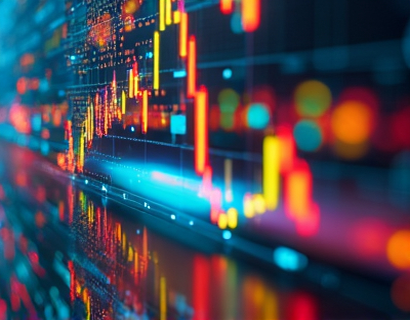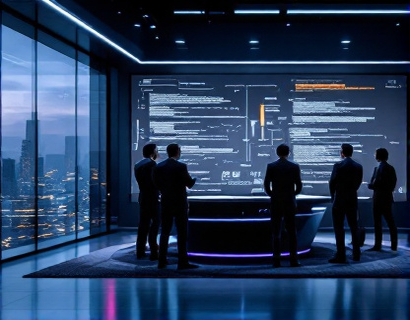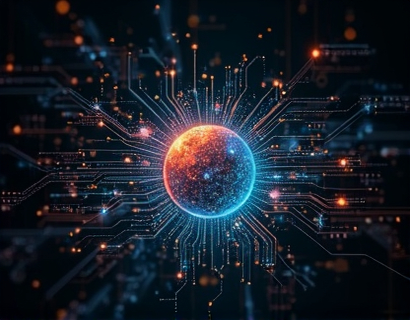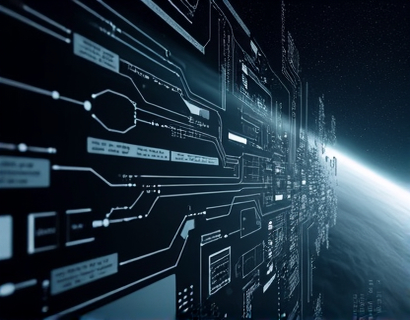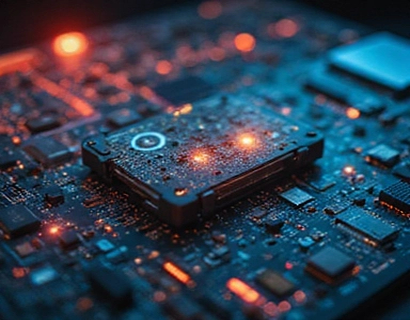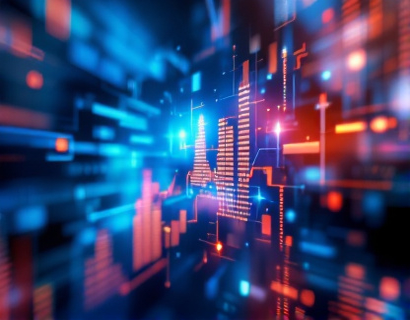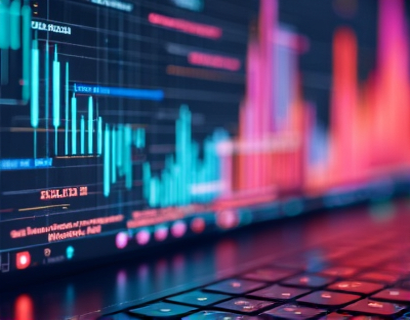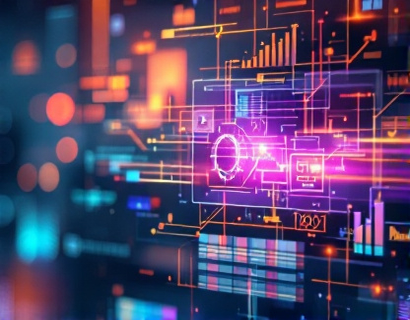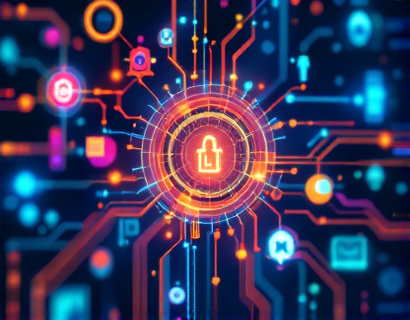Unlocking the Potential of AI in Crypto: Transforming Digital Finance with Intelligent Solutions
The intersection of cryptocurrency and artificial intelligence (AI) is ushering in a new era of digital finance, one that promises to revolutionize the way we interact with financial systems. This article delves into the profound impact of integrating AI into the crypto ecosystem, exploring how these technologies are reshaping digital banking and paving the way for intelligent financial solutions. For tech-savvy crypto enthusiasts and innovators, this exploration offers valuable insights into the future of finance, where AI-driven innovations are becoming the norm.
The Synergy of Crypto and AI
Cryptocurrency, by its very nature, is a decentralized and transparent form of digital currency. It operates on blockchain technology, a distributed ledger that ensures security and trust without the need for intermediaries. AI, on the other hand, is characterized by its ability to learn from data, recognize patterns, and make decisions with minimal human intervention. When these two powerful technologies converge, the potential for innovation in the financial sector is immense.
The synergy between crypto and AI is evident in several key areas, including trading, security, and user experience. AI algorithms can analyze vast amounts of market data to predict price movements, optimize trading strategies, and manage risk more effectively. This integration not only enhances the efficiency of crypto trading but also opens up new possibilities for investment and financial management.
AI in Crypto Trading
One of the most significant applications of AI in the crypto space is in trading. Traditional trading relies heavily on human analysis and decision-making, which can be limited by cognitive biases and the inability to process large datasets quickly. AI-driven trading platforms, however, can analyze historical data, real-time market conditions, and even social media sentiment to make informed trading decisions.
These platforms use machine learning algorithms to identify patterns and trends that might not be apparent to human traders. For instance, reinforcement learning, a subset of AI, allows trading bots to improve their strategies over time by learning from past trades. This continuous learning process enables them to adapt to market changes and optimize performance, leading to higher returns and reduced risk.
Moreover, AI can facilitate algorithmic trading, where predefined rules and conditions trigger automated trades. This not only speeds up the trading process but also reduces emotional decision-making, a common pitfall for human traders. The result is a more efficient and objective trading environment, where AI algorithms can operate 24/7 without fatigue.
Enhancing Security with AI
Security is a paramount concern in the crypto world, given the high value of assets and the decentralized nature of transactions. AI plays a crucial role in bolstering security measures by detecting and preventing fraudulent activities. Machine learning models can analyze transaction patterns to identify anomalies that may indicate fraud or cyberattacks.
For example, AI can monitor blockchain transactions in real-time, flagging suspicious activities such as unusual transaction volumes or patterns that deviate from the norm. This proactive approach allows for quicker responses to potential threats, enhancing the overall security of crypto assets. Additionally, AI-powered identity verification systems can help prevent unauthorized access and ensure that only legitimate users can interact with crypto platforms.
Another area where AI enhances security is in the development of advanced encryption methods. AI algorithms can generate complex cryptographic keys that are nearly impossible to crack, providing an additional layer of protection for sensitive data. This is particularly important as the value of crypto assets continues to rise, making them attractive targets for cybercriminals.
Improving User Experience through AI
Beyond trading and security, AI is transforming the user experience in the crypto space. One of the most notable improvements is in customer support. AI chatbots and virtual assistants can provide instant, 24/7 support to users, answering common questions, guiding them through transactions, and offering personalized advice. This not only enhances user satisfaction but also reduces the workload on human support teams.
AI-driven analytics can also help crypto platforms understand user behavior and preferences, enabling them to tailor their services to meet specific needs. For instance, by analyzing user interactions and transaction history, AI can recommend suitable investment opportunities or highlight features that align with a user's financial goals. This personalized approach fosters a more engaging and user-friendly experience.
Furthermore, AI can simplify the onboarding process for new users. Complex crypto platforms often have a steep learning curve, deterring potential users. AI-powered tools can guide users through the setup process, explaining concepts in simple terms and automating repetitive tasks. This makes the entry barrier lower, encouraging more people to explore the crypto space.
Smart Contracts and AI
Smart contracts, self-executing contracts with the terms directly written into code, are another area where AI can add significant value. While smart contracts are inherently secure and transparent, AI can enhance their functionality by introducing more complex logic and adaptive behavior.
For example, AI can be used to create dynamic smart contracts that adjust their terms based on real-time data. This is particularly useful in decentralized finance (DeFi) applications, where conditions such as interest rates, loan terms, and insurance payouts can vary based on market conditions. AI algorithms can monitor these conditions and automatically update the smart contract parameters, ensuring that all parties are always working with the most current and relevant terms.
AI can also help in the development of more sophisticated DeFi protocols by analyzing historical data to predict future trends and optimize contract design. This can lead to more efficient and effective financial products that better serve the needs of users.
Challenges and Considerations
While the integration of AI in the crypto space offers numerous benefits, it also presents several challenges that need to be addressed. One of the primary concerns is the regulatory landscape. As AI-driven crypto solutions become more prevalent, regulators are beginning to take notice, leading to increased scrutiny and potential new regulations.
Another challenge is the technical complexity involved in developing and maintaining AI systems. Building robust and reliable AI models requires significant expertise and resources. Moreover, the quality of AI outcomes is highly dependent on the data used to train the models. Ensuring data accuracy and integrity is crucial to avoid biased or incorrect decisions.
There is also the issue of trust and transparency. Users need to understand how AI algorithms make decisions, especially in critical areas like trading and security. Explaining AI-driven processes in an accessible manner is essential to build user confidence and adoption.
The Future of AI in Crypto
Looking ahead, the future of AI in the crypto space is bright, with ongoing advancements promising even more innovative solutions. One area of focus is the development of more sophisticated AI models that can integrate multiple data sources and provide more nuanced insights. For example, combining market data with social media sentiment analysis can offer a more comprehensive view of market dynamics.
Another exciting development is the integration of AI with other emerging technologies such as quantum computing and the Internet of Things (IoT). Quantum computing, with its ability to process complex calculations at unprecedented speeds, can significantly enhance AI's capabilities in crypto trading and security. IoT devices can provide real-time data feeds, further enriching the data landscape available to AI algorithms.
Additionally, the rise of decentralized AI (DAI) is worth noting. DAI involves distributing AI computations across a network of nodes, similar to how blockchain operates. This approach can enhance privacy, reduce central points of failure, and make AI more accessible and resilient.
As the crypto and AI ecosystems continue to evolve, the potential for transformative innovations remains vast. The collaboration between these technologies will likely lead to more intuitive, secure, and user-friendly financial solutions, reshaping the digital finance landscape in ways we are only beginning to imagine.




